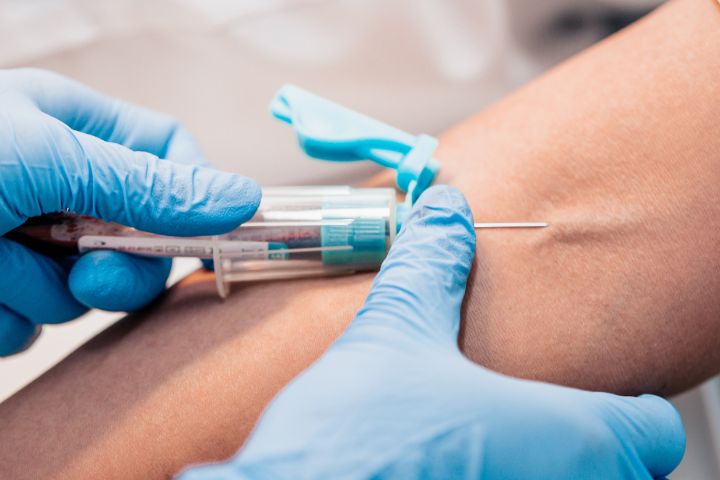About Northeast Medical Institute - New Haven Campus Phlebotomy Course & Cna Class
About Northeast Medical Institute - New Haven Campus Phlebotomy Course & Cna Class
Blog Article
Some Ideas on Northeast Medical Institute - New Haven Campus Phlebotomy Course & Cna Class You Should Know
Table of ContentsThe Northeast Medical Institute - New Haven Campus Phlebotomy Course & Cna Class PDFsSome Of Northeast Medical Institute - New Haven Campus Phlebotomy Course & Cna ClassNortheast Medical Institute - New Haven Campus Phlebotomy Course & Cna Class - QuestionsTop Guidelines Of Northeast Medical Institute - New Haven Campus Phlebotomy Course & Cna ClassThe Greatest Guide To Northeast Medical Institute - New Haven Campus Phlebotomy Course & Cna Class6 Easy Facts About Northeast Medical Institute - New Haven Campus Phlebotomy Course & Cna Class Shown
The usage of such devices should be come with by various other infection avoidance and control practices, and training in their use. Not all safety and security gadgets are applicable to phlebotomy. Prior to selecting a safety-engineered tool, users must extensively explore offered gadgets to identify their ideal use, compatibility with existing phlebotomy techniques, and efficacy in securing team and patients (12, 33).For settings with reduced sources, cost is a driving factor in procurement of safety-engineered gadgets. Where safety-engineered devices are not readily available, knowledgeable use of a needle and syringe is appropriate.
Among the essential markers of high quality of treatment in phlebotomy is the participation and cooperation of the individual; this is equally beneficial to both the health employee and the patient. Clear information either created or spoken need to be available per client that undertakes phlebotomy. Annex F offers example message for describing the blood-sampling procedure to a person. In the blood-sampling space for an outpatient division or center, provide a comfy reclining sofa with an arm rest.
Get This Report about Northeast Medical Institute - New Haven Campus Phlebotomy Course & Cna Class
Make sure that the indications for blood sampling are clearly defined, either in a composed procedure or in recorded directions (e.g. in a laboratory form). Whatsoever times, comply with the approaches for infection prevention and control noted in Table 2.2. Infection avoidance and control methods. Gather all the equipment required for the procedure and area it within secure and very easy reach on a tray or cart, ensuring that all the things are clearly visible.
Present yourself to the individual, and ask the patient to mention their full name. Check that the research laboratory type matches the individual's identity (i.e. match the individual's information with the research laboratory kind, to guarantee accurate recognition).
Make the person comfy in a supine position (if feasible). The individual has a right to reject a test at any type of time prior to the blood sampling, so it is essential to guarantee that the individual has recognized the procedure - PCT Classes.
More About Northeast Medical Institute - New Haven Campus Phlebotomy Course & Cna Class
Expand the person's arm and evaluate the antecubital fossa or forearm. Locate a vein of an excellent size that shows up, straight and clear. The layout in Section 2.3, shows common placements of the vessels, but many variations are possible. The average cubital capillary exists in between muscular tissues and is normally the most simple to puncture.
DO NOT insert the needle where capillaries are drawing away, due to the fact that this increases the opportunity of a haematoma. The capillary needs to be visible without using the tourniquet. Locating the capillary will certainly assist in establishing the correct size of needle. Apply the tourniquet regarding 45 finger widths above the venepuncture site and re-examine the blood vessel.
Specimens from main lines carry a risk of contamination or wrong lab examination results. It is acceptable, however not ideal, to attract blood samplings when initial presenting an in-dwelling venous tool, prior to connecting the cannula to the intravenous fluids.
Little Known Questions About Northeast Medical Institute - New Haven Campus Phlebotomy Course & Cna Class.
Allow the area to dry. Failing to allow enough get in touch with time enhances the threat of contamination. DO NOT touch the cleansed site; particularly, DO NOT position a finger over the blood vessel great site to guide the shaft of the revealed needle. It the site is touched, repeat the sanitation. Perform venepuncture as follows.
Ask the client to develop a fist so the blood vessels are extra noticeable. Go into the blood vessel promptly at a 30 degree angle or less, and continue to present the needle along the capillary at the easiest angle of entry - CNA Classes. As soon as sufficient blood has actually been gathered, launch the tourniquet prior to taking out the needle
The Ultimate Guide To Northeast Medical Institute - New Haven Campus Phlebotomy Course & Cna Class
Take out the needle carefully and apply mild pressure to the site with a tidy gauze or dry cotton-wool sphere. Ask the client to hold the gauze or cotton woollen in place, with the arm prolonged and raised. Ask the client NOT to flex the arm, because doing so causes a haematoma.

Northeast Medical Institute - New Haven Campus Phlebotomy Course & Cna Class - The Facts
Do not press the syringe plunger due to the fact that additional stress enhances the threat of haemolysis. Where feasible, keep televisions in a rack and move the rack in the direction of you. Infuse downwards right into the suitable coloured stopper. DO NOT get rid of the stopper since it will launch the vacuum. If the example tube does not have a rubber stopper, infuse very gradually right into the tube as decreasing the stress and rate used to transfer the specimen minimizes the risk of haemolysis.

Report this page